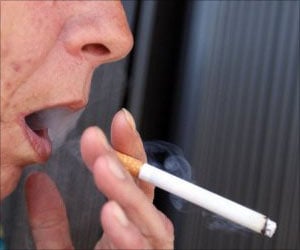
‘While the prevalence of depression is consistently highest among smokers, the rate of increase in depression was most prominent among former and never smokers.
’
Tweet it Now
The research team found that depression appeared to have
significantly increased in the U.S. from 2005 to 2013 among smokers, as
well as among former and never smokers. While the prevalence of
depression is consistently highest among smokers, the rate of increase
in depression was most prominent among former and never smokers. The full study findings are published online in the journal Drug and Alcohol Dependence. The research team, led by Renee Goodwin, in the Department of Epidemiology, analyzed data from the National Household Survey on Drug Use, an annual cross-sectional study of approximately 497, 000 Americans, ages 12 and over. The prevalence of past 12-month depression was examined annually among current (past 12-month), former (not past 12-month), and lifetime non-smokers from 2005 to 2013. The researchers further analyzed the data by age, gender, and household income.
"The prevalence of depression increased and remains higher among current smokers overall, but the rate of the increase among former and never smokers was even more prominent," noted Dr. Goodwin. Striking temporal changes emerged by age, gender and income. Specifically, depression increased significantly, from 16% to 22%, among current smokers aged 12 to17, and the prevalence was consistently more than twice as high as that of never smokers.
The increase in depression also rose from 6% to 8% among male smokers and increased from 6% to 9% among smokers in the highest income group. Throughout this period, the prevalence of depression among current smokers was consistently twice as high as among former and never smokers.
"The very high rates of depression among the youngest smokers, those aged 12-17, is very concerning, as it may impair their ability not only to stop smoking, but also to navigate the important developmental tasks of adolescence that are important for a successful adult life" said Mailman School of Public Health's Dr. Deborah Hasin, a senior member of the research team.
Advertisement
Source-Eurekalert















